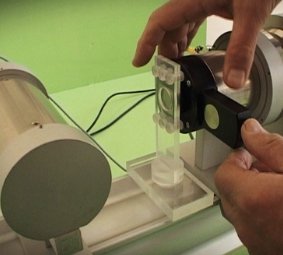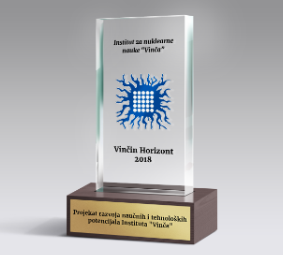The main idea of this project is based on the synthesis of composite materials based on cellulose hydrogel functionalized with hydroxyapatite for application in cosmetics. The final cosmetic product with environmentally friendly and non-toxic properties would affect the process of skin appeasement due to inflammatory processes. Hydroxyapatite is a natural mineral that is the main component of the mineral part of bones and teeth; in nanoparticle form it has exceptional biocompatible, antimicrobial and filter properties in terms of light absorption from the UVA and UVB spectra. Obtaining cellulose is achieved by simple cultivation of acetic acid bacteria, which give a completely pure cellulose hydrogel that would be further functionalized for use in cosmetics, replacing synthetic cosmetic products obtained from petroleum. Through this process of obtaining cellulose, it has a designed final shape according to the shape of the grown vessel. Processing of the final product using a simple synthesis process obtains the desired design and size of cellulose that can be produced in quantities suitable for commercial application. The cost of production by this method of synthesis might be reduced up to 30% by using waste as a carbon source, partially replacing conventional substrates for cellulose synthesis, and using ethanol that was created as waste after the hydroxyapatite synthesis process. Due to hydroxyapatite’s functional characteristics as incorporated into cellulose hydrogel would be applied as cosmetic products in the form of face and body masks and protective creams. The products are environmentally friendly since during the synthesis, part of the generated waste is used in the process of obtaining cellulose again. Obtaining hydroxyapatite materials and cellulose hydrogels by green synthesis processes represent new non-toxic materials implemented in cosmetic skin care products with antimicrobial and protective properties that are completely environmentally safe.
Institut "Vinča"
- About Institute
- Science
- Inovations
- Documents
- Contact
- Industry
- Education
- Publication Repository
- Intranet
- Webmail


Project type:
United Nations Development Program (UNDP), Green Agenda in Serbia - Public call for innovative ideas. CIRCULAR ECONOMY FOR RESOURCE EFFICIENCY AND INDUSTRIAL SYMBIOSIS
Realization period:
15. 12. 2023 - 15. 12. 2024.
Project funded by:
United Nations Development Programme
SRO project holder:
„Vinča“ Institute of nuclear sciences-National Institute of the Republic of Serbia, University of Belgrade
- University of Belgrade, Institute of Chemistry, Technology and Metallurgy
- University of Belgrade, Faculty of Agriculture
- "Ameless" cosmetic - Vrnjačka Banja
Principal investigator:
Miljana Mirković, Viši naučni saradnik
- Researchers included into project: Aleksandar Vukadinović, Viši stručni saradnik, mr farmacijeAna Kalijadis, Naučni savetnikLjiljana Kljajević, Viši naučni saradnikMarko Perić, Viši naučni saradnik, dr biohemijskih naukaSnežana Nenadović, Naučni savetnikZorana Milanović, Naučni saradnik, dr veterinarske medicine
FEATURED

The Research Instruments
the list of research instruments

Projects with Industry
Services and acreditation





